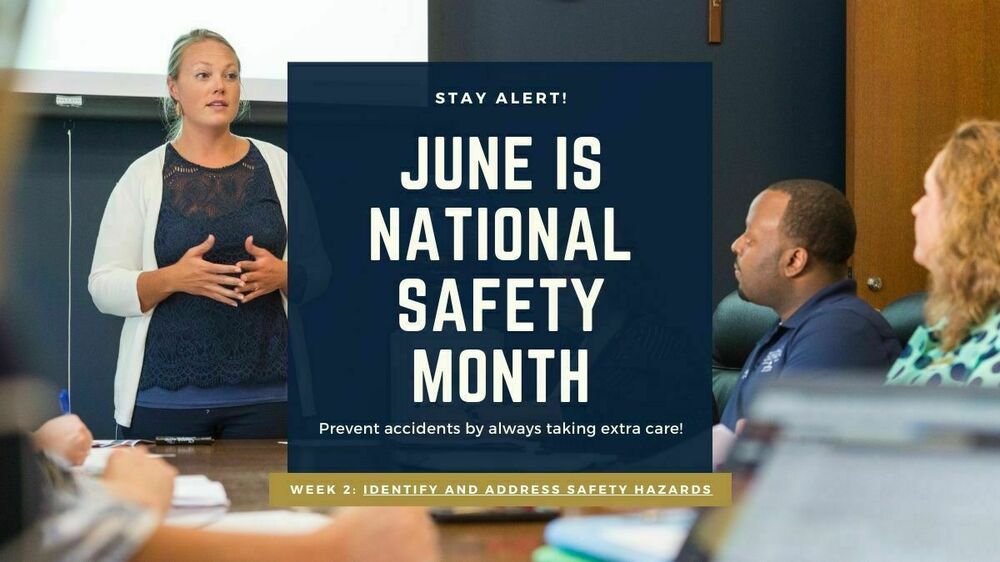Hazards surround us in both our work and home environments, manifesting in various forms. This could range from a cord across a pathway to a repetitive task, a chilly worksite, or a burnt-out light outside. A hazard is any current or potential condition that, alone or in conjunction with other factors, can lead to harm, damage, or loss. Vigilance is crucial for all of us. Identifying hazards promptly allows employers to address and rectify them, thus preventing accidents and illnesses.
Reporting hazards is a key aspect of our safety strategy. Whether informing your supervisor, maintenance team, safety committee, or using a designated reporting system, reporting hazards promptly is essential. It's better to report a hazard multiple times than not at all. You are the expert in your role, workspace, tasks, and tools. Don't hesitate to speak up if something seems amiss. Avoid falling into the trap of complacency - even routine tasks can conceal hidden dangers after being performed countless times.
TYPES OF HAZARDS
As per the Nine Elements of a Successful Safety & Health System, hazards are classified into four main categories:
-
Chemical: Such as inhaling, ingesting, or skin contact with various chemical substances.
-
Physical: Includes risks like slipping, falling, being hit by objects, exposure to fire, or electrical hazards.
-
Biological: Involves exposure to molds, bloodborne pathogens, wastewater, plant toxins, or insect poisons.
-
Ergonomic: Involves tasks like working in awkward postures, repetitive movements, forceful actions, or poor workstation design.
The Nine Elements also highlight common hazards to be mindful of:
-
Environment: lighting, noise, temperature, and humidity
-
Workstation Design: control and display setup, positioning and alignment of work areas, chair ergonomics, task/job structure
-
Movement and Repetition: exertion, vibration, posture requirements, physical strain, work pace, tool ergonomics, size and shape of work tools, weight of equipment and objects
-
Machinery and Equipment Design: motion needed for operation, force required, vibration, posture demands, and necessary pace to operate equipment.
Remember to consider your own physical well-being for potential hazards. Lack of proper rest or experiencing new discomfort can be initial signs of issues. Even medications you take might present risks, especially if they induce drowsiness.
In the event of an incident or near miss at your workplace, make sure to the incident investigation process. This enables the investigator to pinpoint the root causes and uncover all potential hazards that could have played a role. Delving into this level of detail also assists the safety team in determining the most effective methods to prevent the hazards from reoccurring, thus averting future injuries and illnesses.
HOW TO CONTROL HAZARDS
-
To mitigate hazards, either engineer them out or modify the process or environment to remove the hazard. Alternatively, substitute with a safer option.
-
Implement administrative controls, which involve using policies or procedures to minimize exposure to hazards. This could include establishing protocols for chemical handling or rotating workers on repetitive tasks.
-
Utilize suitable personal protective equipment like gloves or eye protection to act as a barrier between you and the hazard.
Remember to adhere to established safety protocols and don't hesitate to suggest alternative solutions for a safer work environment. Let us know if you see an unsafe situation or have a safety concern by completing a Good Catch!
For a fresh perspective on hazard identification, explore the visual literacy research available from the Campbell Institute at thecampbellinstitute.org/research.
Stay vigilant for hazards at home as similar risks present themselves in domestic settings. Empower your family to recognize hazards by taking on the role of safety manager at home. Encourage your loved ones to report safety concerns to you promptly to prevent accidents. While hazards are ever-present, acknowledging and addressing them can help maintain safety for everyone.
References: According to NSC Publication, Nine Elements of a Successful Safety & Health
Test your Hazard Recognition with this fun Spot the Hazard Activity.
Contact Risk Management & Safety for Questions about this or other Safety Related topics @ 574.631.5037 or riskman@nd.edu
